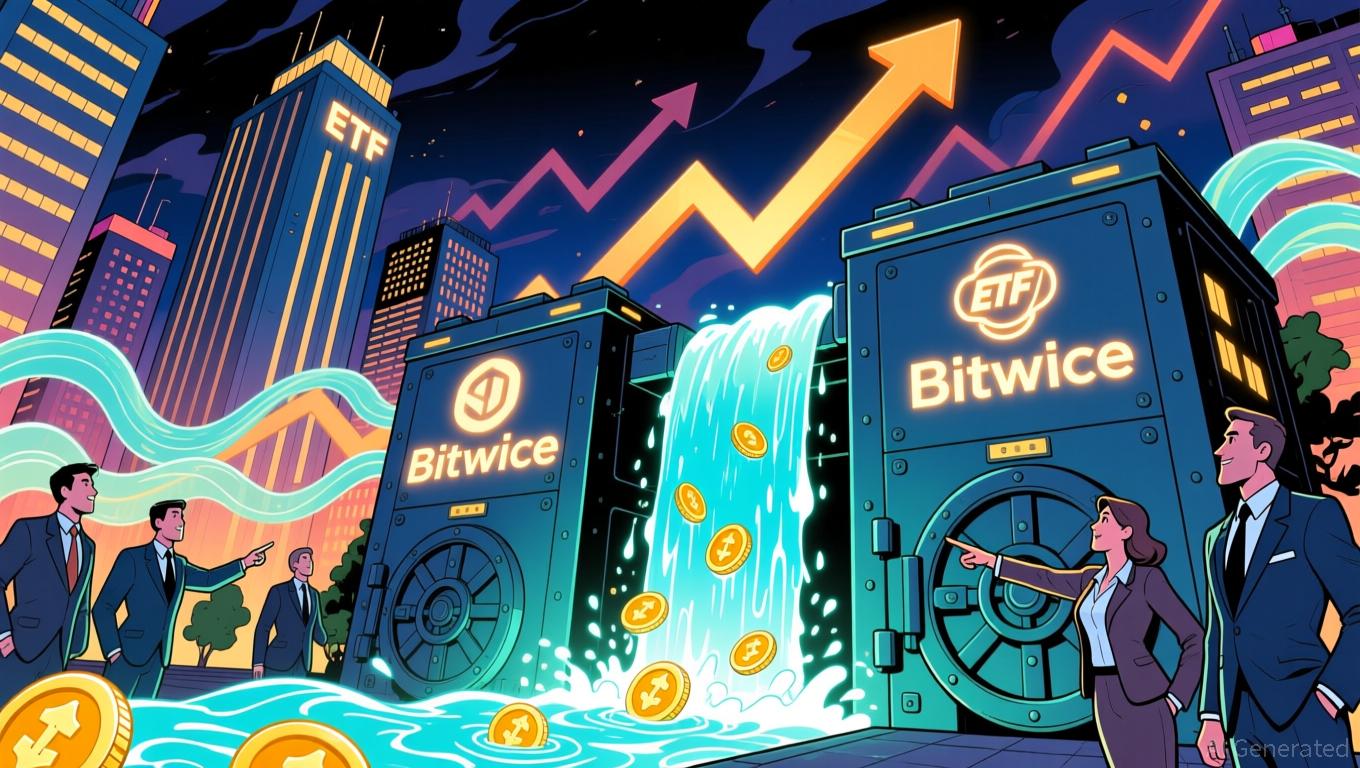Regulatory changes and Dencun enhancements are transforming how Ethereum treasuries manage their strategies
- Institutional investors face volatile ETH ETF flows, with Q2 inflows of $9.4B contrasting late September outflows of $216.7M. - Dencun upgrade cuts Layer-2 costs by 98%, boosting TVL and competition among L2 providers. - Regulatory shifts, including SEC’s stablecoin framework and the GENIUS Act, may alter ETH supply dynamics via redemptions and compliance demands. - ETH’s drop below $4,000 triggers $62M in liquidations, signaling bearish momentum amid ETF-driven volatility.

Source: [1]
---
Flows into and out of ETFs are transforming the competitive environment for crypto treasury operations, as institutional interest in Ethereum (ETH) becomes increasingly volatile. Recent figures highlight a complex relationship between spot Ethereum ETFs, Layer-2 scaling improvements, and regulatory developments, presenting both new prospects and hurdles for digital asset managers.
Spot Ethereum ETFs, which attracted over $9.4 billion in net inflows during Q2 2025, are now seeing short-term outflows. For example, two days of ETF withdrawals in late September amounted to $216.7 million, reflecting a more cautious approach from institutional players during market pullbacks. This stands in contrast to earlier periods, such as a single week when inflows reached $1.12 billion, largely driven by BlackRock’s ETHA fund. These shifting flows underscore how sensitive institutional capital is to Ethereum’s price movements, especially as the asset hovers near important support thresholds.
The Dencun upgrade, which went live in March 2024, has added further complexity. By implementing EIP-4844 (proto-danksharding), the upgrade slashed Layer-2 transaction expenses by as much as 98%, making data storage more affordable through temporary "blobs" instead of expensive calldata. This has fueled the adoption of Ethereum rollups such as
Regulatory developments are also playing a crucial role. The U.S. SEC’s latest stablecoin guidelines, which exempt "covered stablecoins" from being classified as securities, have increased institutional trust in digital assets. However, new regulations like the GENIUS Act, which imposes tighter controls on stablecoin issuers, may indirectly affect Ethereum’s supply. For instance, more stablecoin redemptions via ERC-20 contracts—each burning ETH—could add deflationary pressure, prompting treasury teams to rethink strategies based on supply metrics.
Market players are currently dealing with mixed signals from both bullish and bearish trends. While Ethereum ETFs help cushion spot market swings, technical analysis points to ongoing bearish sentiment. ETH’s drop below $4,000 and the 20-day simple moving average has led to a wave of short-term liquidations, with $62 million in futures contracts cleared in just 24 hours. Experts warn that continued outflows may force treasury managers to adjust portfolios or hedge against further price drops.
Although the Dencun upgrade offers clear long-term scalability advantages for Ethereum, it also brings new operational complexities. The move to blob-based data storage, for example, requires treasury teams to adapt to updated fee structures and optimize liquidity across Layer-2 networks. At the same time, the SEC’s emphasis on stablecoin reserve transparency could push firms to update their compliance practices.
As the landscape continues to shift, the interaction between ETF flows, technical enhancements, and regulatory changes will shape the next era of institutional involvement. For now, the market remains unsettled, with Ethereum’s price near key psychological thresholds and treasury teams adjusting their strategies to keep pace with rapid developments.
---
: Ethereum funding rates have turned negative, indicating a bearish stance.
: ETF inflows reached $1.12B in September, followed by notable outflows later in the month.
: ETH’s fall below $4,000 resulted in $62M worth of liquidations.
: Dencun upgrade cut Layer-2 expenses by 98%, increasing TVL and transaction speed.
: Blob-based storage has introduced new fee structures for Layer-2 transactions.
: Stablecoin legislation could drive more ETH burns through redemptions, impacting supply.
: SEC’s exclusion of covered stablecoins from securities rules has strengthened their legitimacy.
Disclaimer: The content of this article solely reflects the author's opinion and does not represent the platform in any capacity. This article is not intended to serve as a reference for making investment decisions.
You may also like
Ethereum News Update: ZKP’s Hardware-Centric Strategy Shakes Up Speculation-Fueled Crypto Presales
- ZKP launches with $17M pre-built Proof Pods, offering instant AI compute rewards via Wi-Fi-connected hardware. - Unlike speculative presales, ZKP's hardware-first model ensures operational readiness and decentralized network resilience. - Competitors like Blazpay and SpacePay focus on utility-driven crypto adoption, but ZKP's tiered, upgradable devices emphasize verifiable performance. - Ethereum's gas limit increase aligns with ZKP's distributed compute approach, addressing scalability challenges throug

Solana News Update: Investors Shift Toward XRP ETFs, Bringing Solana's 21-Day Inflow Streak to a Close
- Solana ETFs ended a 21-day inflow streak with a $8.1M net outflow on Nov 27, 2025, led by 21Shares TSOL's $34.37M redemptions. - This reversal contrasted with Bitcoin/Ethereum ETFs' $5.43B outflows and highlighted Solana's 7% staking yields and 70M daily transactions. - Analysts linked the shift to profit-taking, macroeconomic pressures, and investor rotation toward XRP ETFs with perfect inflow records. - Despite the outflow, Solana ETFs still hold $964M in assets, but face challenges as TVL dropped 32%

XRP News Today: Institutional ETFs Drive XRP to Compete with Bitcoin's Market Leadership
- XRP ETFs see $160M+ inflows as institutional demand surges, with Bitwise and Franklin Templeton leading the charge. - NYSE approves Grayscale and Franklin XRP/Dogecoin ETFs amid SEC easing altcoin fund approvals, signaling crypto normalization. - Altcoin Season Index at 25/100 shows Bitcoin dominance, but projects like Aster and Zcash outperform BTC by 1,000%+. - XRP rebounds to $2.06 with 48% volume spike, but 79M tokens absorbed by ETFs raise supply concerns. - Institutional-grade custody solutions fro

Public-Private Collaborations Driving Real Estate and Industrial Expansion in Webster, NY
- Webster , NY, leverages PPPs via FAST NY and NY Forward grants to boost infrastructure, real estate , and industrial investment. - Xerox campus upgrades and downtown revitalization projects enhance connectivity, attracting advanced manufacturing and logistics sectors. - $650M fairlife® facility creates 250 jobs, demonstrating how modernized infrastructure attracts high-value industries to secondary markets. - Websters model shows PPPs can drive sustainable growth by aligning public funding with private-s
